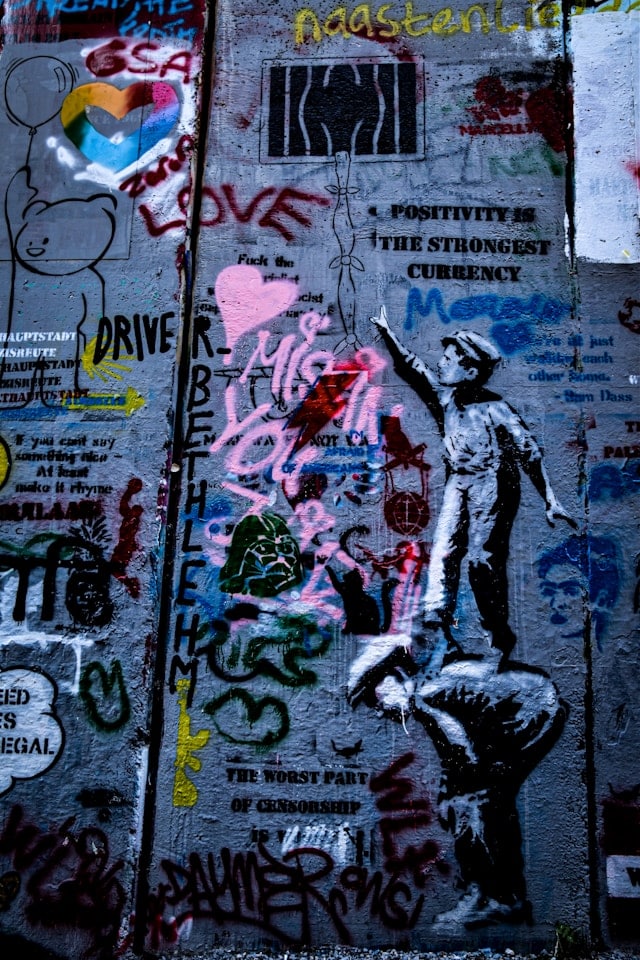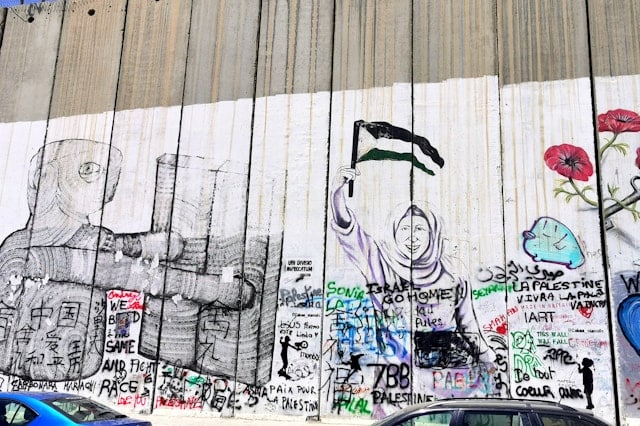As Indian spiritual guru ‘Osho’ said, “The artist has to live in rebellion…you cannot create as part of the mob psychology,” ultimately saying that art, by its nature, is critical, personal and non-conforming. This is how the role of art as resistance has been established globally.
It is the purest manifestation of the human soul, with the inability to lie or deceive.
Art as resistance is powerfully evident in contemporary contexts like the ongoing genocide in Gaza and the occupation of Palestine. It works effortlessly to reveal hidden truths, uncover realities, and expose injustices.

Coloniser “art” is usually hollow, violent and uncomfortably evil.
Indigenous art, which is mostly anti-colonial, is deep, passionate and usually centred around freedom from a colonised world or searching for reconnection to ancestral lands.

Music is also commonly used to communicate political resistance. In her evocative rendition of “Olive Trees,” Palestinian-Chilean singer-songwriter Elyanna delivers a sorrowful ballad that testifies to a homeland vanishing under brutal occupation.
Her lament evokes a lost sanctuary, now foreign and oppressed, filled with unfiltered emotion and ancestral ties.
The number one song in Israel this March was “Charbu Darbu”, a collaboration between Israeli artists Stilla and Ness displaying the desire to destroy Gaza, calling Palestinians “rats” and “whores” and “sons of Amalek”.
They proudly praise the Israeli military for bombing and shooting Palestinians and threaten Palestinian celebrities and supporters like Bella Hadid and Dua Lipa.

“In order for me to write poetry that isn’t political, I must listen to the birds, and in order to hear the birds, the war planes must be silent.”
– Mahmoud Darwish, Palestinian poet
Poetry also proves to be a humble yet potent method of resistance, encoding truths in its rhymes. Author and Palestine’s “poetic voice”, Mahmoud Darwish was raised in a village that was occupied and later razed by the Israeli army.
He famously wrote, “In order for me to write poetry that isn’t political, I must listen to the birds, and in order to hear the birds, the war planes must be silent.”
Shadow and light
Poetry by Mineet Kaur (below)
The now famous poem, “If I Must Die,” by the late Palestinian professor and poet, Refaat Alareer, who was murdered in an Israeli airstrike on his home in December of 2023.
Alareer’s poem expressed a mix of sorrow and hope, urging young Palestinians to preserve their storytelling tradition and keep Palestinian literature alive as resistance against Israeli aggression.
However, art can be used for equally opposite purposes, creating dangerous narratives and perpetuating destructive ideologies.
In October and November 2023, the Israeli army’s Education Corps published issues of a poetry anthology by IDF soldiers titled “Hineni” (Here I Am). This series, referred to as “Revenge Poems” by Israeli newspapers, expresses a desire for vengeance and depicts the combat in Gaza as a religious war.
Palestinian artists paint messages of hope and futures of freedom across the apartheid wall separating indigenous land from its caretakers and families from each other.

Murals on the apartheid wall express solidarity with the Black Lives Matter movement, honouring George Floyd, who was murdered by police in Minneapolis, Minnesota in 2020.
They also convey grief for medic Rouzan al-Najjar, who was shot by the Israeli military while attempting to evacuate wounded protesters during Gaza’s Great March of Return.
Impressions of independence
Southern Asia was a crossroad of colonial empires including the British, French and Dutch. These empires gradually retreated through a prolonged decolonisation process from the 1940s to the 1970s.
Artistic expressions both reflected and propelled the region’s resistance movements.
The project “Aesthetics of Decolonization,” conducted at Leiden University, examines the role of art in decolonisation across South Asia after the partition of British India in 1947.
It emphasises the works of artists like Bhabesh Sanyal in India, Zainul Abedin in East Pakistan (now Bangladesh) and Shakir Ali in West Pakistan, who used their art to address themes of displacement, cultural memory and national identity – forms of anti-colonial resistance.
Among Bhabesh Sanyal’s notable works are “The Flying Scarecrow,” “Cow Herd,” “Despair,” and “Way to Peace,” which portrays Mahatma Gandhi with a Hindu and a Muslim child.
In 1984, Sanyal received the Padma Bhushan, India’s highest award in visual arts.
Artistic anti-colonial protest reveals the quality art holds against other expressive mediums – the ability to transcend borders and time.
Art as resistance is, thus, internationalist.
Double-edged brush
Despite its powerful dual role in forming narratives of love and hate, art has remained loyal to victims of oppression – gifting a voice to the silenced.
In a world upholding a culture of oppression, art as resistance strengthens the community and drives revolutions.
Whether through the murals on apartheid walls or the evocative poetry of Darwish, the simplest artwork can display complex truths and inspire collective action.
From Palestine to Sudan, Congo, Haiti, Syria and Yemen, marginalised by Western greed and selfishness, art stands as a sharp, unyielding testament to the resilience and spirit of the oppressed.
It is within these expressions that the deepest truths and calls for justice reside.
Aneesha is interested in journalism with a focus on climate and culture. She aims to use storytelling for change. She’s inspired by art history and South Asian fiction.


